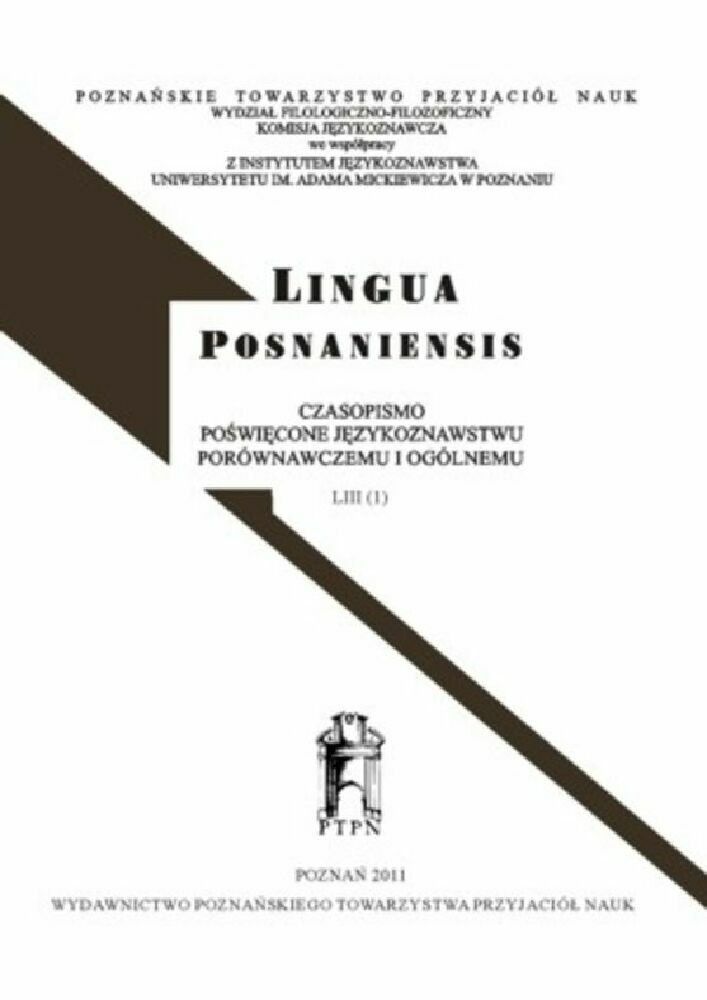Abstract
The vowel /a/ is regarded here as the initial sound, based on earlier vowel-like vocalization in humans, especially the neonate cry. This particular type of vocalization marks the true beginning of human language in the ontological perspective. Its presence is absolutely fundamental for the generation and maintenance of oxygen-based language and culture complex. All of human life is conducted in the human auditive world of organization based on the air (the aerial condition).
References
Bell, S.M. & Ainsworth, M.D. 1972. Infant crying and maternal responsiveness. Child Development 43(4). 1171-1190. DOI: https://doi.org/10.2307/1127506
Chomsky, N. & Halle, M. 1968. The sound pattern of English. New York: Harper and Row.
Corbett, J.M. 2003. Sound organisation: A brief history of psychosonic management. Ephemera 3(4). 265-278.
Flemming, E.S. 2001. Auditory representations in phonology. Stanford, CA: Stanford University Press. (Also published in 2016 by Routledge).
Foley, J. 1977. Foundations of theoretical phonology. Cambridge: Cambridge University Press.
Fort, A. & Manfredi, C. 1998. Acoustic analysis of newborn infant cry signals. Medical Engineering and Physics 20. 432-442. DOI: https://doi.org/10.1016/S1350-4533(98)00045-9
Furlow, F.B. 1997. Human neonatal cry quality as an honest signal of fitness. Evolution and Human Behavior 18. 175-193. DOI: https://doi.org/10.1016/S1090-5138(97)00006-8
Gelfand, S.A. 2010. Hearing: An introduction to psychological and physiological acoustics. 5th edn. Colches-ter, UK: Informa healthcare.
Heffner, R.S. 2004. Primate hearing from a mammalian perspective. The Anatomical Record, Part A. 281A. 1111-1122. DOI: https://doi.org/10.1002/ar.a.20117
Hillman, N.H. & Kallapur, S.G. & Jobe, A.H. 2012. Physiology of transition from intrauterine to extrauterine life. Clinics in Perinatology 39. 769-783. DOI: https://doi.org/10.1016/j.clp.2012.09.009
Kilminster, M.G.E. & Laird, E.M. 1978. Articulation developement in children aged three to nine years. Jour-nal of Human Communication Disorders 6(1). 23-30. DOI: https://doi.org/10.3109/asl2.1978.6.issue-1.04
Kimbrough Oller, D. & Caskey, M. & Yoo, H. & Bene, E.R. & Jhang, Y. & Lee, C.C. & Bowman, D.D. & Long, H.L. & Buder, E.H. & Vohr, B. 2019. Preterm and full term infant vocalization and the origin of language. Scientific Reports 2019(9). 14734. DOI: https://doi.org/10.1038/s41598-019-51352-0
Kirchner, R. 1997. Contrastiveness and faithfulness. Phonology 14(1). 83-111. DOI: https://doi.org/10.1017/S0952675797003291
Ladefoged, P. & Maddieson, I. 1990. Vowels of the world’s languages. Journal of Phonetics 18. 93-122. DOI: https://doi.org/10.1016/S0095-4470(19)30396-1
Ladefoged, P. & Maddieson, I. 1996. The sounds of the world’s languages. Hoboken, N.J.: Blackwell.
Maddieson, I. 2009. Patterns of sounds. Cambridge: Cambridge University Press.
Maddieson, I. & Disner, S.F. 1984. Patterns of sounds. Cambridge: Cambridge University Press. DOI: https://doi.org/10.1017/CBO9780511753459
Michelsson, K. & Michelsson, O. 1999. Phonation in the newborn, infant cry. International Journal of Pedi-atric Otorhinolaryngology 49. 297-301. DOI: https://doi.org/10.1016/S0165-5876(99)00180-9
Miller, G.A. 1951. Language and communication. New York: McGraw-Hill Book Company, Inc.
Ohala, J. 1983. The origin of sound patterns in vocal tract constraints. In MacNeilage, P. (ed.), The production of speech, 189-216. Berlin–New York: Springer-Verlag. DOI: https://doi.org/10.1007/978-1-4613-8202-7_9
Ostwald, P. 1972. The sounds of infancy. Developmental Medicine and Child Neurology 14. 350-361. DOI: https://doi.org/10.1111/j.1469-8749.1972.tb02601.x
Puppel, S. (ed.). 2001. A bibliography of writings on the acquisition of first language. Poznań: Wydawnictwo Naukowe UAM.
Puppel, S. 2022. Habent sua fata linguae (czyli szkic o tym, że wszyscy mamy język, że ‘mieszkamy’ w nim i co się z nim dzieje) (Scripta de Communicatione Posnaniensi. Seria: Prace Naukowe Zakładu Ekolingwistyki i Komunikologii UAM. Tom X). Poznań: Perfekt Gaul i wspólnicy sp. j.
Puppel, S. & Jahr, E.H. 1997. The theory of universal vowel space and the Norwegian and Polish vowel systems. In Hickey, R. & Puppel, S. (eds.), Language history and linguistic modelling, vol. II, 1301-1324. Berlin: Mouton de Gruyter.
Ramirez, T. & Herbig, R. 2016. Optimising hearing aid processing for music appreciation. Ent and Audiology News 25(4).
Stevens, K.N. 1972. The quantal nature of speech: Evidence from articulatory-acoustic data. In Denes, P.B. & David, E.E. (eds.), Human communication: A unified view, 51-66. New York: McGraw-Hill.
Stevens, K.N. 1989. On the quantal nature of speech. Journal of Phonetics 17. 3-46. DOI: https://doi.org/10.1016/S0095-4470(19)31520-7
Stevens, K.N. 1998. Acoustic phonetics. Cambridge, Mass.: The MIT Press.
Sullivan, R. & Perry, R. & Sloan, A. & Kleinhaus, K. & Burtchen, N. 2011. Infant bonding and attachment to the caregiver: Insights from basic and clinical science. Clinics in Perinatology 38(4). 643-655. DOI: https://doi.org/10.1016/j.clp.2011.08.011
Vorperian, H.K. & Kent, R.D. 2007. Vowel acoustic space development in children: A synthesis of acoustic and anatomic data. Journal of Speech, Language, and Hearing Research 50(6). 1510-1545. DOI: https://doi.org/10.1044/1092-4388(2007/104)
License
Copyright (c) 1970 Stanisław Puppel

This work is licensed under a Creative Commons Attribution-NonCommercial-NoDerivatives 4.0 International License.

